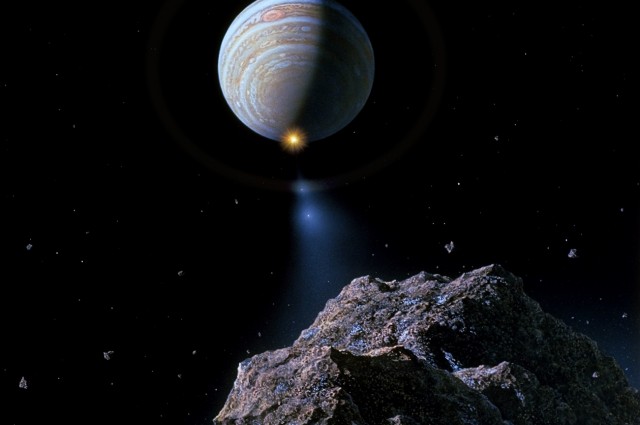Here is a bit more info on how they can use this technique elsewhere:
Using the same technique, the team says it could be possible to see a giant exoplanet suddenly get brighter when a comet strikes it. While existing telescopes are not sufficient to observe such an event, future telescopes like the James Webb Space Telescope (JWST), due to launch in 2018, could do the job.
This seems like a logical technique and we’re looking forward to further results in 2018!
And on a related note here is an excerpt from wikipedia about the difference between comets and asteroids:
Comets are distinguished from asteroids by the presence of an extended, gravitationally unbound atmosphere surrounding their central nucleus. This atmosphere has parts termed the coma (the central part immediately surrounding the nucleus) and the tail (a typically linear section consisting of dust or gas blown out from the coma by the Sun’s light pressure or outstreaming solar wind plasma). However, extinct comets that have passed close to the Sun many times have lost nearly all of their volatile ices and dust and may come to resemble small asteroids.[1] Asteroids are thought to have a different origin from comets, having formed inside the orbit of Jupiter rather than in the outer Solar System.[2][3] The discovery of main-belt comets and active centaurs has blurred the distinction between asteroids and comets.
And here is a cool video on comets we hope you enjoy!
thanks to iflscience.com for the great info
thanks to NASA for the pic

Seems promising? A nice way of saying you hope they find some way to do what they are hoping to do in the future. And is that a wikipedia reference in the article!!?!? What a laugh!